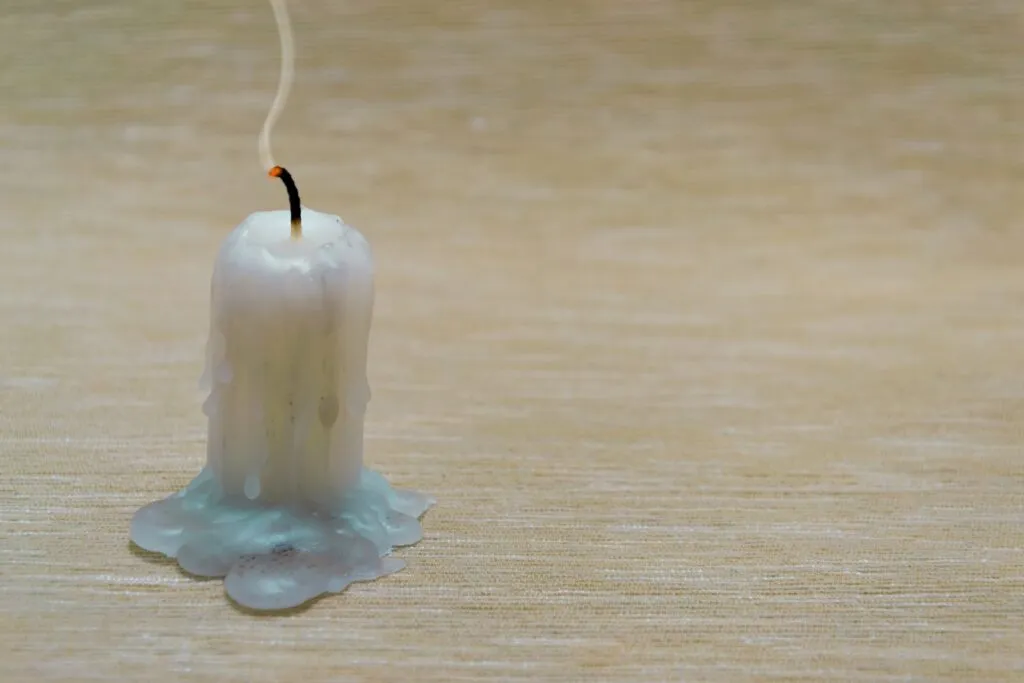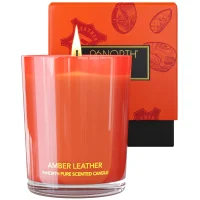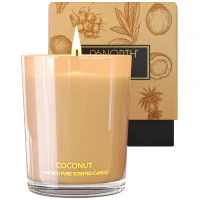Knowing what happens when a candle is lit may help you appreciate candles more. There are all sorts of candles on the market, all made from different materials and burning differently. It’s important to understand the chemical composition of a candle as this affects where the wax goes after it is burned.
Understanding The Candle-Burning Process
The burning process of a candle is relatively simple. Once a candle is lit, the heat created by the flame will begin melting the wax. Materially, a candle comprises two main parts: wax and the wick. The wick will act as a fuse to ignite the components of the wax. The heat from the flame will cause the wax to vaporize, and the vaporized wax will be drawn up the wick.
This will cause the wax to combust, releasing heat and light. This combustion process will continue until all of the wax has been consumed. That is the basic science behind a candle.
What Happens When A Candle Burns?
When burning, heat from the flame melts the wax, which then causes the wax to vaporize and liquefy. Additionally, some of the wax’s substances are oxidized when burning. Oxidation occurs when the vapors react with oxygen, releasing energy. This energy is what produces the candle’s light and heat.
The heat from the flame also causes the wick to burn. As the wick burns, it releases carbon dioxide and water vapor. The carbon dioxide and water vapor mix with the oxygen in the air, creating a flame that is hotter and brighter than the flame of the wax alone. This is why the flame of a candle is often brighter and hotter than the flame of a match.

What Materials Are Found In A Candle?
Most candles are composed of paraffin or soy wax. Other candle substances include stearic acid, vegetable oils, beeswax, tallow, and other natural waxes. At 96NORTH, we provide premium soy wax candles.
In addition to these materials, some candles may also contain fragrances, dyes, and other additives to enhance the scent and appearance of the candle. These additives can be natural or synthetic, creating various scents and colors.
What Is The Chemical Composition Of Candle Wax?
The chemical composition of candle wax depends on its base material. Paraffin wax typically comprises hydrocarbons, while beeswax comprises fatty esters and hydrocarbons. Organic candle waxes are often composed of vegetable oils such as coconut oil and jojoba oil.
The melting point of candle wax also varies depending on its composition. Paraffin wax typically melts at around 120-140°F, while beeswax melts at around 145-147°F. Organic waxes tend to have a lower melting point, usually around 100-120°F.

Where Does Candle Wax Go?
How Does Heat Affect The Wax?
The simple answer is that when exposed to heat, the wax will melt. The more scientific answer is that this occurs when its molecules absorb energy and vibrate; this then causes the particles to move apart and reduce in volume.
The melting point of wax varies depending on the wax used. For example, beeswax has a melting point of around 62-64°C, while paraffin wax has a melting point of around 48-65°C. The melting point of wax can also be affected by adding other implications, such as oils or fragrances.
How Does The Flame Break Down The Candle Wax?
When a flame’s heat is exposed to the melted wax, the vapors released from it will oxidize and break down into smaller particles. This process occurs when oxygen interacts with particles in the melted wax, releasing energy.
Where Does The Wax Go After Burning?
The by-products of combustion are carbon dioxide and water vapor. Depending on the type of wax used, some residue may remain after burning it. Paraffin wax tends to leave less residue compared to plant-based waxes.
The residue left behind after burning wax can vary in color and texture. Paraffin wax residue is usually a white, powdery substance, while plant-based waxes may leave behind a black, sooty residue. The amount of residue left behind will depend on the type of wax used, the temperature of the flame, and the length of time the wax is burned.

Is it Possible To Reuse The Remaining Wax?
If the residue remaining after burning is not too excessive, it might be possible to reuse it.
When attempting to reuse wax, it is important to ensure it is still in good condition. If the wax has become too brittle or exposed to too much heat, it may not be suitable for reuse. Additionally, it is important to ensure that the wax is free from any contaminants that may have been introduced during the burning process.
Potential Uses For Used Candle Wax
There are many potential uses for used candle wax. Reusing existing wax can prove to be a cost-effective measure when crafting handmade candles. You can also use melted wax remnants in various crafts, including sculpting figures or candles and decorative molding.
Candle burning is an activity with a long history. Knowing the journey of wax from melting to combustion can provide valuable insight into environmental topics such as reducing the amount of waste created from candle burning.
By reusing existing wax, candle makers can reduce the amount of new wax needed to create new candles. This can help reduce the amount of energy and resources needed to produce new wax and the amount of waste created from the production process. Reusing wax can reduce the waste created from burning candles, as the wax can be melted down and reused multiple times.
96NORTH Premium Candles
96NORTH sells the best soy wax candles on the market. We have a wide variety of naturally-scented candles, such as Madagascar vanilla and tropical coconut, which can transform your home into a serene, relaxing landscape.
Allow our candles to carry you to distant countries, atmospheres, and settings. Embrace their fragrance and journey through the aroma of beautiful exotic beaches and jaw-dropping lush jungles.
Allow the luxurious scents of 96NORTH’s candles to turn your house into a comfortable and relaxing home. Shop our selection of soy scented candles on our website.
FAQs
Is candle wax toxic?
Candle wax is nonpoisonous. However, it can still cause a blockage in your intestines. People can be allergic to candles, so be sure to look at the ingredients used in making the candle.
Do you breathe in candle wax?
You’re unlikely to breathe in any candle wax. A steady-burning candle is very energy efficient, so all that is released is CO2 and light.
Where does candle wax come from?
Most candles on the market are made from paraffin wax, gel, plants, or beeswax. 96NORTH’s candles are made from soy wax.





